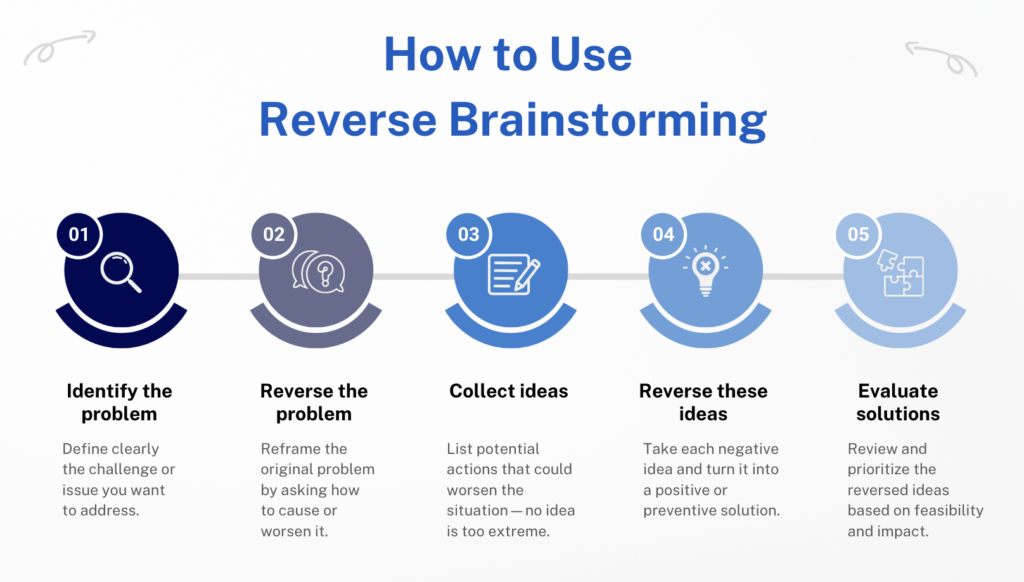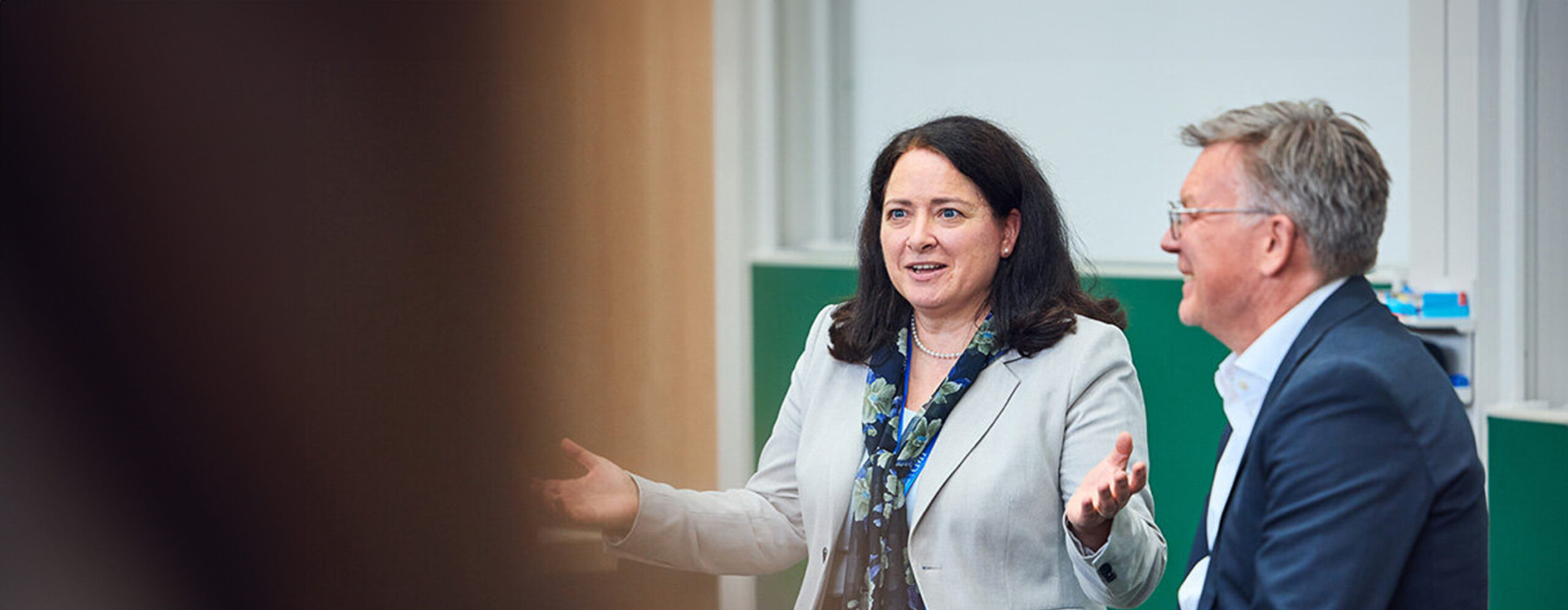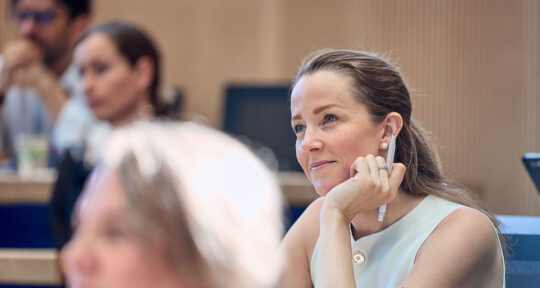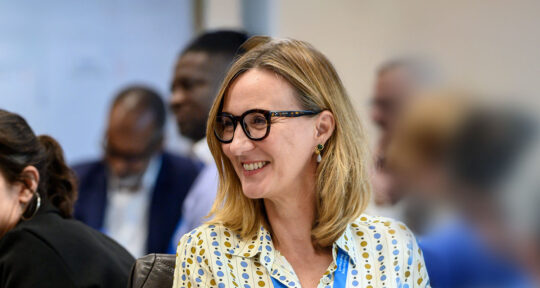Brainstorming is a structured way to generate ideas quickly—alone or in a group—by suspending judgment and encouraging creativity. It’s used to solve problems, spark innovation, and unlock fresh perspectives, especially in uncertain or complex environments.
Far from being just a creativity tool, it’s a key component of agile and adaptive strategic planning.
But why does this decades-old technique still matter in today’s fast-paced world? And how can you apply it to your strategic—not just creative—processes?
This article answers those questions, breaks down the most effective brainstorming techniques, and explores how leaders can integrate them into real decision-making contexts.
- What is brainstorming?
- What are the benefits of this technique?
- How do you brainstorm effectively?
- What makes a brainstorming session successful?
- Brainstorming techniques for an efficient strategy
- How to make brainstorming part of your strategic process
- Pitfalls to avoid when brainstorming
- How can you integrate AI in your brainstorming sessions?
What is brainstorming?
Brainstorming is the process of rapidly generating ideas—often in a group setting—without immediately judging or filtering them. The concept was introduced in the 1940s by advertising executive Alex Osborn, who described it as “using the brain to storm a problem.”
While the method may seem simple, when done right, it can be transformative. The Brainstorming technique can:
- Encourage divergent thinking and novel ideas
- Level hierarchies and give everyone a voice
- Break teams out of mental ruts and assumptions
- Build alignment through shared exploration
From rethinking your go-to-market strategy to solving an organizational challenge, brainstorming opens up new possibilities.
What are the benefits of this technique?
Brainstorming isn’t just about generating ideas: it brings a host of secondary benefits that make it a valuable practice across strategic contexts. From enhancing creativity to strengthening collaboration, its impact goes beyond the ideation session itself.
These are some of the most valuable benefits brainstorming brings to individuals, teams, and organizations:
Encourages creative thinking
By removing the pressure to be right, brainstorming creates space for exploration. It’s not about perfect answers—it’s about surfacing possibilities.
Over time, this mindset strengthens creative confidence across teams. It encourages them to question assumptions, consider fresh perspectives, and co-create new directions.
It shifts the focus from competing ideas to collaborative problem-solving—leading to smarter, more innovative outcomes.
Leads to better teamwork and greater group cohesiveness
Working on ideas together doesn’t just lead to better outcomes—it strengthens the team.
Research from Northern Illinois University found that brainstorming enhances group cohesion and commitment. Teams that focus on idea quantity and build on others’ suggestions “significantly increase their cohesiveness,” leading to lower turnover and higher engagement.
Provides a chance to all members
In many organizations, the loudest voices or highest-ranking titles dominate. Structured brainstorming helps level the playing field.
Techniques like brainwriting or anonymous digital tools make it easier for quieter team members to contribute. This inclusivity results in richer insights, greater trust, and stronger team ownership.
Brings diverse ideas to the table
When brainstorming teams are made up of people with different backgrounds, roles, and experiences, the quality and range of ideas expands. Diversity—in age, expertise, culture, and function—helps uncover blind spots and generate solutions that reflect a broader range of needs.
Reduces decision fatigue
By generating multiple options in a short time, brainstorming helps teams quickly see patterns, eliminate weaker ideas, and identify the strongest paths forward. This shared ideation process also lessens the burden on individual decision-makers.
Strengthens cross-functional collaboration
When people from different departments or areas of expertise come together to brainstorm, ideas start flowing across departments. The process promotes mutual understanding and makes it easier to identify connections between initiatives, functions, or strategies that might otherwise remain isolated.
Helps reduce cognitive bias
Thinking in isolation can reinforce existing assumptions. By including diverse viewpoints, brainstorming helps challenge internal biases and expand beyond conventional thinking. This opens the door to more innovative, well-rounded outcomes.
How do you brainstorm effectively?
Not every brainstorming session leads to useful outcomes. Without the right structure, they can become chaotic or unproductive. To brainstorm effectively, follow these best practices:
To brainstorm effectively, follow these best practices:
1. Choose targeted questions
A good brainstorming session starts by defining a clear challenge. Vague prompts like “let’s think about the future” won’t yield much. Instead, try something more targeted that invites creative responses such as:
- “How might we enter a new market without diluting our brand?”
- “What could we do differently to retain top talent next year?”
- “What strategies could help us expand into Market X?”
- “How can we integrate AI without compromising customer trust?”
2. Create psychological safety
Make it clear that all ideas are welcome and that judgment is suspended during the session. Quantity is the goal at first. This encourages participation and risk-taking.
3. Separate idea generation from evaluation
During the brainstorming phase, it is crucial to focus exclusively on the generation of ideas without interruption. This means that all participants should feel encouraged to share their thoughts, no matter how unconventional they may seem.
The evaluation, analysis, and selection of ideas should be reserved for a later stage in the process. It is important to remember that the moment ideas are critiqued or judged, the flow of creativity can quickly come to a halt. Therefore, maintaining an open and judgment-free environment during brainstorming is essential for fostering innovation and allowing all ideas to flourish.
4. Use constraints and time limits
Short, focused sessions with defined limits—such as “15 ideas in 10 minutes”—help maintain energy and facilitate clear thinking, allowing participants to concentrate intensely during the specified time. This approach not only encourages creativity but also enhances productivity by preventing fatigue and mental burnout, ensuring that everyone remains engaged throughout the session.
5. Keep your sessions visual
Use diagrams, sticky notes, digital whiteboards, or mind maps to make ideas visible as they emerge and develop over time. By employing various visual formats, teams can more easily spot patterns, cluster related thoughts, and build on each other’s contributions in a more effective and collaborative manner.
These tools not only enhance the clarity of the ideas being discussed but also foster an environment of creativity, allowing team members to visualize complex concepts and establish meaningful connections among different perspectives. Visual representations serve as a powerful aid in the brainstorming process, enriching discussions and leading to more innovative solutions.

What makes a brainstorming session successful?
A successful session leads to clarity—not just creativity. It works when participants are engaged, the goal is clear, and the process is structured but flexible.
That goal isn’t just to come up with ideas—it’s to build a shared understanding of the challenge, surface different ways to approach it, and begin shaping a direction the team can rally around. Sometimes the goal is to explore solutions, other times it’s to uncover new problems worth solving. Either way, clarity is the signal that the session worked.
The best sessions produce a shared understanding of the challenge and spark momentum. If people leave aligned, energized, and still thinking about what’s next, it works.
Who should be in the room when you brainstorm?
Effectiveness depends as much on who participates as how the session is run. For strategic topics, aim for a mix of:
- Domain experts
- Lateral thinkers
- Key stakeholders
- Junior voices or external participants for fresh input
IMD tip: don’t overlook junior voices—they often bring fresh perspectives. Likewise, including someone from outside your team (or even outside your industry) can spark unexpected connections.
Brainstorming techniques for an efficient strategy
Different goals require different methods. Here are some techniques that suit strategic settings:
TECHNIQUE | BEST USE CASE | GROUP OR SOLO? | REQUIRES FACILITATOR? |
Classic brainstorming | Early ideation with open-ended goals | Group | Yes |
Reverse brainstorming | Challenging assumptions or blockers | Group or solo | Optional |
Brainwriting | Avoiding groupthink / introvert-friendly | Group | Yes |
SCAMPER | Reframing existing ideas or products | Solo or group | No |
Role storming | Encouraging out-of-the-box perspectives | Group | Optional |
Classic brainstorming (Osborn method)
This is the original group brainstorming approach developed by Alex Osborn in the 1940s. Team members gather and share ideas out loud in a free-flowing session, building on each other’s thoughts in real time. The goal is quantity over quality—at least at first.
Best for:
- Early-stage exploration
- Generating broad ideas quickly
- Aligning diverse teams around a challenge
Reverse brainstorming
Instead of asking how to solve a problem, this method asks how to cause or worsen the problem. It’s particularly effective at surfacing risks, hidden assumptions, and failure points that might otherwise go unnoticed.
Example:
- Standard prompt: “How can we improve the customer onboarding experience?”
- Reverse prompt: “How could we make the onboarding experience worse?”
- Insight: Once negative actions are identified, the team works backwards to prevent or address them.
Best for:
- Risk mitigation
- Challenging assumptions
- Uncovering blind spots

Brainwriting (6-3-5 method)
In this silent brainstorming format, 6 participants write down 3 ideas in 5 minutes. Papers are passed along to the next person, who builds on them. After six rounds, you have 108 ideas—without anyone speaking.
Best for:
- Avoiding groupthink
- Encouraging introverted participants
- Generating a high volume of ideas with minimal bias
SCAMPER
SCAMPER is a structured brainstorming technique that challenges teams to look at an existing product, process, or service from seven creative angles:
- Substitute
- Combine
- Adapt
- Modify
- Put to another use
- Eliminate
- Reverse
Best for:
- Innovating on existing models
- Product or service development
- Challenging status quo ideas
Role storming
Role storming involves adopting personas—real or fictional—to approach a problem from a new perspective. For example, asking “What would Elon Musk do?” prompts different thinking than approaching the challenge as yourself.
Best for:
- Breaking habitual thinking
- Inspiring bold or unconventional ideas
- Engaging teams in playful, low-pressure creativity
Team members share ideas aloud and build on each other’s contributions. Best for early exploration and team alignment.
How to make brainstorming part of your strategic process
To maximize its value, brainstorming should be embedded into your broader strategy development—not treated as a one-time workshop.
Here’s how to integrate it:
- Use brainstorming to launch planning cycles: begin each strategic planning cycle with an open brainstorming session. This sets a tone of collaboration and encourages diverse input before decisions are locked in. It also helps uncover unexpected opportunities early on.
- Involve cross-functional teams: bring in voices from marketing, operations, finance, product, HR, and beyond. Different roles bring different assumptions—and combining them leads to richer, more nuanced insights that a single team alone might miss.
- Test assumptions through ideation: Use brainstorming to pressure-test your thinking. Ask provocative questions like “What if our biggest advantage disappeared tomorrow?” or “What would our competitor do in our shoes?”.
- Revisit past sessions: Ideas that seemed too bold, expensive, or premature six months ago might now be viable. Build in time each quarter to review previous brainstorming outputs and evaluate them in light of changing market or organizational conditions.
At IMD, we’ve seen global leaders incorporate brainstorming into everything from market entry strategy to organizational redesign—with results that are both creative and grounded.
How brainstorming supports strategic agility
In volatile business environments, agility is essential. Brainstorming supports this by creating a fast and repeatable mechanism for generating options, testing scenarios, and identifying signals of change.
When used regularly—not just in crisis—it helps organizations:
- Sense shifts in the market before competitors do
- Create space for exploration without committing prematurely
- Empower teams to adapt strategies in real time
Strategic agility requires more than fast execution. It requires fast thinking, and brainstorming is one of the most efficient ways to mobilize that thinking across an organization.
Pitfalls to avoid when brainstorming
Even well-run sessions can go wrong if key factors aren’t managed. Here’s how to sidestep common challenges:
Groupthink
When participants align too quickly on a single idea or solution, there is a risk that divergent thinking is suppressed, which can stifle creativity and innovation. To foster a more inclusive and expansive brainstorming process, it is essential to encourage individual ideation before sharing ideas within the group setting.
This can be effectively accomplished by utilizing silent methods such as the brainwriting mentioned before, where participants jot down their ideas independently. This approach helps protect and nurture original thought, allowing each individual’s unique perspectives to emerge without the influence of groupthink. By promoting these practices, teams can cultivate a more dynamic and creative environment that embraces a variety of viewpoints and solutions.
Dominant voices
In group discussions or collaborative settings, individuals with strong or dominant personalities may unintentionally take control of the conversation.
One effective strategy is to intentionally invite input from those who have not yet spoken. This can be done by directly asking for their thoughts or by creating structured opportunities for everyone to share, such as round-robin formats or small group breakouts. By doing so, the facilitator not only encourages broader participation but also signals that every team member’s voice is valued and respected.
Vague objectives
If the prompt is unclear or too broad, the session can become unproductive. Clearly define the challenge or question at the outset, and restate it periodically to keep the group focused.
To prevent this, it is crucial to clearly articulate the central question, problem, or objective at the very beginning of the session. This initial framing sets the tone and direction for the discussion, helping everyone understand the purpose and scope of the conversation. A well-defined prompt should be specific, focused, and relevant to the goals of the group.
No follow-up
Even the most dynamic and idea-rich session can fall flat if the insights generated are not acted upon. Brainstorming, problem-solving, or planning meetings are only as valuable as the follow-through that comes afterward. Without a clear plan for implementation, even the most innovative ideas risk being forgotten, overlooked, or lost in a sea of meeting notes.
To ensure that the momentum continues beyond the session, it’s essential to assign ownership to the top ideas or action items. This means clearly identifying who is responsible for taking each idea forward, whether that involves further development, testing, or execution. Assigning ownership not only creates accountability but also empowers individuals to take initiative and drive progress.
PITFALL | WHAT TO DO INSTEAD |
💭 Groupthink | Try brainwriting or use breakout groups |
🗣️ Dominant voices | Appoint a neutral facilitator |
🎯 Vague objectives | Frame a focused, specific question |
👀 No follow-up | Assign ownership and integrate into planning |
How can you integrate AI in your brainstorming sessions?
AI doesn’t replace human creativity—it enhances it. When used intentionally, artificial intelligence can accelerate brainstorming sessions, spark new directions, and help teams refine ideas faster.
Here are 7 ideas on how you can integrate AI into your next session:
- Use AI to kickstart idea generation: tools like ChatGPT or Notion AI are great for overcoming blank-page syndrome. Ask for initial ideas, alternative framings of your challenge, or prompts to get your team reacting. It’s an easy way to start the flow of ideas.
- Break through internal biases: AI isn’t influenced by company politics, team history, or personal preferences. This neutrality can challenge entrenched thinking and surface options your team might otherwise overlook.
- Spark inspiration with unexpected connections: AI tools analyze vast amounts of data and content, spotting patterns or analogies from other industries that may not be obvious.
- Rapidly explore variations and angles: once a direction emerges, ask AI for multiple takes: “Give me 5 ways to approach this,” or “How would this work in a different market?” This supports early-stage divergent thinking and uncovers edge-case possibilities.
- Summarize and synthesize ideas: after your session, AI can help structure the output. Feed it raw notes or a digital board export and ask it to group ideas by theme, remove duplicates, or highlight priorities. It’s a quick way to clarify what’s next.
- Refine and prototype faster: once top ideas are selected, AI can help accelerate execution—drafting product descriptions, outlining marketing angles, or even generating basic wireframes. This doesn’t replace your team’s judgment, but helps you move faster.
- Save time and stay focused: by letting AI handle high-volume tasks like idea generation, categorization, or copy variations, your team can focus on refinement, prioritization, and decision-making—the parts that need a human brain.
Reminder: AI works best as a partner. Let it enhance—not replace—the messy, human, emotional parts of brainstorming that make your strategy uniquely yours.
Brainstorming as a strategic habit
Brainstorming isn’t just about creativity—it’s a strategic practice that fosters agility, collaboration, and problem-solving. When embedded into your processes, it becomes a habit that strengthens your strategy over time.
When done with structure and purpose, it unlocks diverse, high-impact ideas, deepens team alignment, and promotes cross-functional collaboration. Combined with the power of AI tools, it also accelerates idea generation, reduces bias, and helps teams move from raw input to actionable outcomes more efficiently. Over time, this turns brainstorming into a repeatable habit that drives strategic clarity and adaptability.
If you’re ready to elevate your strategic thinking, explore IMD’s Strategic Thinking program. Learn alongside leaders from around the world and unlock new levels of strategic impact.
Stay up to date 💌
Join the IMD Community.
Stay informed with our latest insights on leadership, strategy, digital transformation and more. Explore fresh perspectives from IMD business school to help you navigate today’s complex business landscape.




